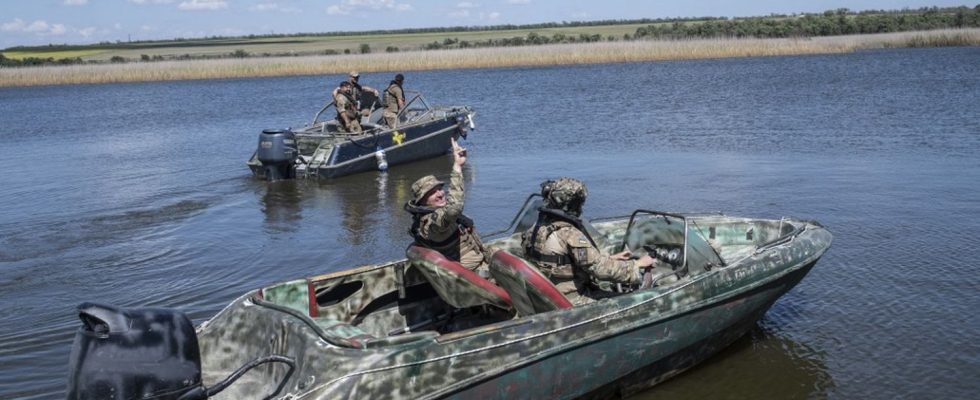This is the first numerical estimate of the advance of kyiv’s troops in this area after months of disappointing counter-offensive.
If this advance is confirmed, it would be the biggest push by the Ukrainian army against the Russians in several months. Ukraine claimed, on Sunday, November 19, to have repelled the Russian army “from 3 to 8 km” deep on the left bank of the Dnieper occupied by the army of Moscow. This is the first numerical estimate of the advance of kyiv’s troops in this area after months of disappointing counter-offensive.
“Preliminary figures vary from 3 to 8 km, depending on the specificities, geography and topography of the left bank”, declared an army spokesperson, Natalia Goumeniouk, on Ukrainian television. Natalia Goumeniouk, however, did not specify whether Ukrainian forces completely controlled this area of the Kherson region, or whether the Russian army had withdrawn in the face of attacks by Kiev troops. “The enemy continues its artillery fire on the right bank”she detailed, estimating the number of Russian soldiers present in this area at “several tens of thousands”. But AFP is not able to confirm all of these assertions.
Russian “violent fighting” and “strong resistance”
Launched last June, the long-awaited counter-offensive by Kiev and its Western allies failed, allowing the Ukrainian army to retake only a handful of villages in the south and east. But on Friday, kyiv said it had taken positions on the left bank of the Dnieper, while reporting “violent fighting” and a “strong resistance” Russian. Moscow, for its part, has not mentioned the Ukrainian bridgeheads until now. Before that, the last major success claimed by Ukraine in its counter-offensive was the recapture of the village of Robotyné in August, in the southern region of Zaporizhia.
Taking positions in depth on the left bank of the Dnieper could allow a larger assault in the south. But for this, Ukraine must succeed in deploying its army in this difficult to access, sandy and marshy area. In this area of southern Ukraine, the Dnieper has served as a front line since the Russian army withdrew from the city of Kherson in November 2022. At the same time, explosive drone attacks, signatures of the war in Ukraine, have increased in recent days.
